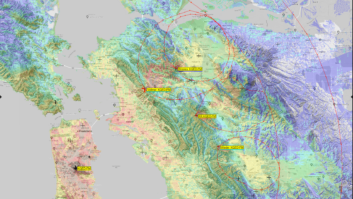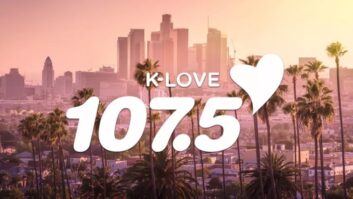Problems and solutions
Jan 1, 2008 12:00 PM, Chriss Scherer
[email protected]
In the eyes of broadcasters, December was a busy month for the FCC. Broadcasting is just one small part of the FCC’s concerns, so when several significant rulings are made at once, broadcasters naturally take notice. Two recent actions deal with broadcast ownership while another deals with programming localism. Now that the FCC has acted, there are more questions raised than answers provided.
On the localism issue, the notice of proposed rulemaking is based on information from the FCC’s Report on Broadcast Localism. This report calls on 83,000 written comments and the testimony of more than 500 panelists during the FCC’s localism hearings that were held around the U.S. I am impressed with the amount of material collected by the FCC, and it would appear that there is a significant problem with the amount of local interest content being broadcast on stations. However, there are many more voices that have said nothing on the matter because I believe they don’t really care.

Broadcasters are � according to the FCC � temporary trustees of the public’s airwaves and are obligated to operate their stations to serve the public interest, including their airing of programming responsive to the needs and issues of their station communities of license. Can stations provide more programming to fit this perceived need? In almost all cases the answer is yes. The reality is that this type of programming will not likely appeal to the mass audience. There’s a reason most of the public affairs programming is buried in the early morning Sunday hours. For more evidence, simply compare the ratings between the local zoning hearing on the cable community access channel to the ratings of nearly any reality show. What does the public really want?
Taking this one step further, TV stations are now required to provide more information on the local programming they provide. This is to help viewers better evaluate a TV station’s effort to serve its community. I will not be surprised if this is also applied to radio very soon. Just what we need: more paperwork.
Once again, the FCC is trying to over-legislate the matter. Rules already exist that require broadcasters to serve the public interest. The FCC should enforce what is already in place.
The ownership issues are more complicated. One item deals with lifting the absolute restriction of a single entity owning a broadcast license and a newspaper in the same market. The rule change allows cross-ownership to occur in the largest markets, citing that larger markets have more broadcast and newspaper choices and therefore more natural diversity.
Because there are only so many broadcast licenses available, it’s impossible to grant a license to any interest that wants one (although the FCC seems to have an answer for that as well). But anyone can own a newspaper. For that matter, anyone can operate a website or create an Internet audio or video stream. There are opportunities for diversity without restricting a media outlet from being a broadcaster and a publisher.
The ownership item that really confuses me deals with promoting diversity in broadcast ownership. The FCC wants to help new potential licensees obtain financing as well as identify available spectrum. Again, this is a noble goal, but the FCC created the problem itself, and this is a further step at applying a larger bandage to the problem. In one breath the FCC relaxes the ownership rules to allow a company to own hundreds of radio stations. Then it wonders why there is a lack of diversity in ownership. Gee, if we could only understand where the problem lies.
It will be interesting to see what the else the FCC can do for broadcasters during 2008. I expect there will be some changes at the FCC next year when a new president takes office, regardless of his or her party affiliation.
What’s your opinion? Send it to[email protected]







